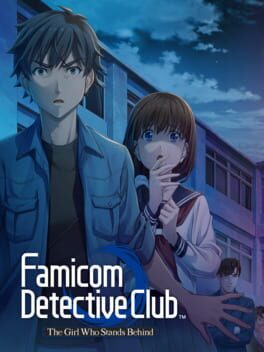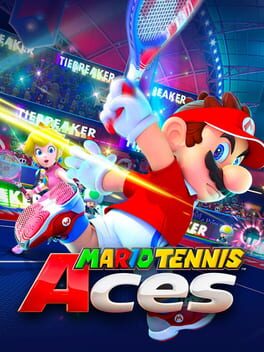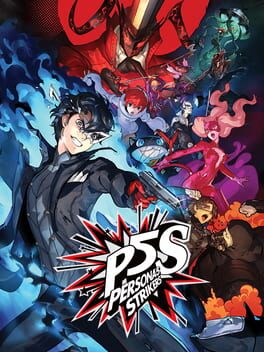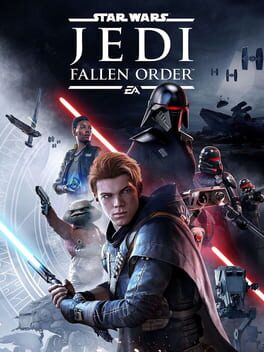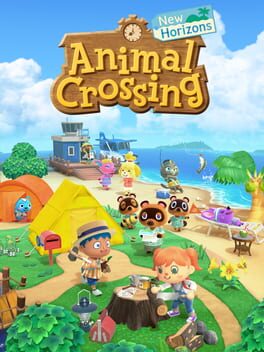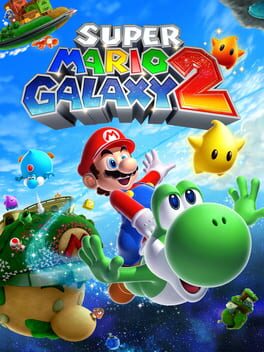mugi
The game is fun but there is NO content. We've been complaining about the lack of content for the last few Mario sports games, but I don't think it's ever been this bad. Aces and Super Rush at least had attempts at adventure modes, as superficial as they were.
The only single player content Battle League has outside of exhibition matches are cup battles, six cup tournaments where you face teams that excel in a certain attribute (shooting, passing, speed, etc.) The average match length is four minutes, and these cups have three matches each if you go all the way. There's also an online mode called Strikers Club, which is Mario’s take on FIFA’s pro clubs, however, I am yet to try this out considering not a single soul I know owns this game.
There's a fair amount of depth to the gameplay that keeps it entertaining. I particularly like how imperfect the goalkeepers are, and the gear system means that playing around with different team comps can be fulfilling, but all of this is for naught when there are only two unique modes to experiment in.
In a world lacking in tennis games, Aces was more than good enough to fill that void. But in a world where FIFA exists, Next Level Games have given me no reason to keep playing this.
The only single player content Battle League has outside of exhibition matches are cup battles, six cup tournaments where you face teams that excel in a certain attribute (shooting, passing, speed, etc.) The average match length is four minutes, and these cups have three matches each if you go all the way. There's also an online mode called Strikers Club, which is Mario’s take on FIFA’s pro clubs, however, I am yet to try this out considering not a single soul I know owns this game.
There's a fair amount of depth to the gameplay that keeps it entertaining. I particularly like how imperfect the goalkeepers are, and the gear system means that playing around with different team comps can be fulfilling, but all of this is for naught when there are only two unique modes to experiment in.
In a world lacking in tennis games, Aces was more than good enough to fill that void. But in a world where FIFA exists, Next Level Games have given me no reason to keep playing this.
2021
Everything I said about price and presentation in my previous review of The Girl Who Stands Behind applies here too. The Missing Heir still sounds and looks amazing, but it is still overpriced. What I want to touch on in this review are the story and gameplay, which are vastly different from the second game.
I found the story in The Missing Heir to be fantastic. In the second game, the event you're investigating happens right at the start, meaning you're following in its trail the whole time and not much new is happening, you're just slowly uncovering the mysteries of that event. I wouldn't have chalked that down as a bad thing if this one didn't play out so differently. In The Missing Heir, things are constantly happening around you in the midst of the investigation, persistently alternating your course of action, and making things way more exciting. It weaves many more threads into the story, posing a lot of questions that kept me on the edge of my seat for all of my six hour sitting, and all of these threads tie up well. One of my complaints about the The Girl Who Stands Behind was that there was no character building for the protagonist. He felt like an empty vessel for the player, and I didn't think this one would be any different, but I'm pleased to announce that I was wrong. This game sets a great foundation for the main character, as this is a story that would not have worked without him, so it's disappointing that the second game didn't take that development anywhere. I described the second game as feeling like a one-off Ace Attorney case, but I'm now realising that that's not a good thing.
So the story is really good and much better than the second game's, now what's different about the gameplay? It's terrible. Every complaint I had about the second game's outdated adventure gameplay is amplified here tenfold. It's so incredibly frustrating, and I'd recommend that anyone playing this one keeps a guide on hand at all times. There were a couple of redeeming qualities about it though. Rather than have you pick from a list of potential answers when making deductions, this game pulls up a keyboard and asks you to type your answer instead. I found that this was a clever little way of making me feel like I was piecing things together myself, even if it only happened twice. The other noteworthy gameplay element is that there's a minor first person dungeon crawling section at the end, which was nothing to write home about, but it was a welcome surprise and a nice change of pace.
If you absolutely have to try one of the Famicom Detective Club games at full price, get this one. While its adventure gameplay made me want to rip my hair out, its excellent story and presentation kept me engaged the entire time. Both of these games plus maybe two or three more cases of equal length would have made a great package for $60/£50, but if that happened back on the Famicom, the Ace Attorney series we know and love may not exist today. Famicom Detective Club will always be the older brother in the shadow of the Ace Attorney series, but these remakes will ensure that its influence will never be forgotten.
I found the story in The Missing Heir to be fantastic. In the second game, the event you're investigating happens right at the start, meaning you're following in its trail the whole time and not much new is happening, you're just slowly uncovering the mysteries of that event. I wouldn't have chalked that down as a bad thing if this one didn't play out so differently. In The Missing Heir, things are constantly happening around you in the midst of the investigation, persistently alternating your course of action, and making things way more exciting. It weaves many more threads into the story, posing a lot of questions that kept me on the edge of my seat for all of my six hour sitting, and all of these threads tie up well. One of my complaints about the The Girl Who Stands Behind was that there was no character building for the protagonist. He felt like an empty vessel for the player, and I didn't think this one would be any different, but I'm pleased to announce that I was wrong. This game sets a great foundation for the main character, as this is a story that would not have worked without him, so it's disappointing that the second game didn't take that development anywhere. I described the second game as feeling like a one-off Ace Attorney case, but I'm now realising that that's not a good thing.
So the story is really good and much better than the second game's, now what's different about the gameplay? It's terrible. Every complaint I had about the second game's outdated adventure gameplay is amplified here tenfold. It's so incredibly frustrating, and I'd recommend that anyone playing this one keeps a guide on hand at all times. There were a couple of redeeming qualities about it though. Rather than have you pick from a list of potential answers when making deductions, this game pulls up a keyboard and asks you to type your answer instead. I found that this was a clever little way of making me feel like I was piecing things together myself, even if it only happened twice. The other noteworthy gameplay element is that there's a minor first person dungeon crawling section at the end, which was nothing to write home about, but it was a welcome surprise and a nice change of pace.
If you absolutely have to try one of the Famicom Detective Club games at full price, get this one. While its adventure gameplay made me want to rip my hair out, its excellent story and presentation kept me engaged the entire time. Both of these games plus maybe two or three more cases of equal length would have made a great package for $60/£50, but if that happened back on the Famicom, the Ace Attorney series we know and love may not exist today. Famicom Detective Club will always be the older brother in the shadow of the Ace Attorney series, but these remakes will ensure that its influence will never be forgotten.
Right off the bat, I must point out this game's biggest flaw: its pricing. One Famicom Detective Club (FDC) game is $35, or £50/$60 for both, and in Europe you cannot buy them separately. For a remake of a Famicom adventure game/visual novel that took me under six hours to complete with virtually zero replayability, this pricing is just unacceptable, and I can't recommend this game to anyone if the price stays this way.
Nevertheless, The Girl Who Stands Behind is pretty good. The best point of comparison I can make is that it feels like a long and loose Ace Attorney case, the ones that have nothing to do with any overarching plots. There is almost nothing in terms of character building for the protagonist, and the little that was there felt shoehorned in. This is the second FDC game, which I played first by recommendation of the one review that I read before buying, meaning that there might be better foundations laid out in the The Missing Heir, but I wouldn't count on it. This isn’t inherently a bad thing, since the game was intent on feeling like a one-off episode, and it executed that well.
The story was intriguing, and it had enough twists and turns to keep me guessing for the almost one sitting I played it in. It’s about a dead high school girl and a rumour about a ghost in said school, with a more serious tone than the light-hearted Ace Attorney series. I was promised a bit of horror by that one review I read, but it didn’t really deliver until the very end, and even then, it was very tame. It’s very linear, meaning that you won’t have to piece together the puzzle yourself, but the game does a good job of addressing deductions the player might have made, eliminating most of the annoying dramatic irony that comes with detective media like this.
In terms of its success as a remake, it’s excellent from a presentation standpoint. The new art direction is great, with a fair amount of charm that complements the story well. The characters are expressive, and the backgrounds are intricate. I’m told that it’s even prettier in the first game, which is set in the countryside, where this one is in the city. It’s fully animated and voice acted too, making it feel like a step above something like the older Ace Attorney games. The rearranged music was surprisingly nice, with options for the Famicom versions too if you want a more authentic experience.
FDC’s remade presentation brushed up well, but what doesn’t hold up so well today is the adventure gameplay. One of the reasons I played this one first was because I was told its gameplay is less obtuse than the first game, and if this is “less obtuse” I shudder to think about what The Missing Heir is like. You have to pixel peep for the inanest things. You have to exhaust every dialogue option for a character multiple times even if their only response is “…”. It’s just not elegant in the slightest, and even though I got through it easy enough, I found myself eyerolling at some of the ways to progress. It’s a shame that the gameplay was largely untouched considering the effort that went into remaking the presentation.
Famicom Detective Club: The Girl Who Stands Behind is well done remake and a fantastic homage to detective media that fans of Ace Attorney will enjoy, although you’ll need to have some patience for its outdated gameplay. Like I said before though, I can’t recommend that anyone buys this until the price has been slashed by at least 50%, or you’ll come away from its short runtime feeling very unsatisfied. That being said, it’s time for me to go buy and play The Missing Heir.
Nevertheless, The Girl Who Stands Behind is pretty good. The best point of comparison I can make is that it feels like a long and loose Ace Attorney case, the ones that have nothing to do with any overarching plots. There is almost nothing in terms of character building for the protagonist, and the little that was there felt shoehorned in. This is the second FDC game, which I played first by recommendation of the one review that I read before buying, meaning that there might be better foundations laid out in the The Missing Heir, but I wouldn't count on it. This isn’t inherently a bad thing, since the game was intent on feeling like a one-off episode, and it executed that well.
The story was intriguing, and it had enough twists and turns to keep me guessing for the almost one sitting I played it in. It’s about a dead high school girl and a rumour about a ghost in said school, with a more serious tone than the light-hearted Ace Attorney series. I was promised a bit of horror by that one review I read, but it didn’t really deliver until the very end, and even then, it was very tame. It’s very linear, meaning that you won’t have to piece together the puzzle yourself, but the game does a good job of addressing deductions the player might have made, eliminating most of the annoying dramatic irony that comes with detective media like this.
In terms of its success as a remake, it’s excellent from a presentation standpoint. The new art direction is great, with a fair amount of charm that complements the story well. The characters are expressive, and the backgrounds are intricate. I’m told that it’s even prettier in the first game, which is set in the countryside, where this one is in the city. It’s fully animated and voice acted too, making it feel like a step above something like the older Ace Attorney games. The rearranged music was surprisingly nice, with options for the Famicom versions too if you want a more authentic experience.
FDC’s remade presentation brushed up well, but what doesn’t hold up so well today is the adventure gameplay. One of the reasons I played this one first was because I was told its gameplay is less obtuse than the first game, and if this is “less obtuse” I shudder to think about what The Missing Heir is like. You have to pixel peep for the inanest things. You have to exhaust every dialogue option for a character multiple times even if their only response is “…”. It’s just not elegant in the slightest, and even though I got through it easy enough, I found myself eyerolling at some of the ways to progress. It’s a shame that the gameplay was largely untouched considering the effort that went into remaking the presentation.
Famicom Detective Club: The Girl Who Stands Behind is well done remake and a fantastic homage to detective media that fans of Ace Attorney will enjoy, although you’ll need to have some patience for its outdated gameplay. Like I said before though, I can’t recommend that anyone buys this until the price has been slashed by at least 50%, or you’ll come away from its short runtime feeling very unsatisfied. That being said, it’s time for me to go buy and play The Missing Heir.
This is NieR with new content, looking and playing better than ever, making one of the best stories in the medium an even better overall package. Unfortunately, it doesn't sound better than ever with the new soundtrack lacking the soul that made the original's music the best I've ever heard in a game. It's still fairly good, so I won't let it stain what is otherwise a masterpiece, but it was sometimes hard to listen to having heard the perfection that is the original's OST.
All in all, they made a game that I criticised for looking and playing like shit look super pretty and play noticeably better. I can only hope that a music restoration mod makes this the absolute definitive way to experience NieR.
All in all, they made a game that I criticised for looking and playing like shit look super pretty and play noticeably better. I can only hope that a music restoration mod makes this the absolute definitive way to experience NieR.
2018
As a fan of realistic simulation tennis games, I've steered clear of the Mario Tennis series' arcadey take for years, until now. To my surprise, the core gameplay here is very enjoyable in the normal, gimmick-free matches. The power-ups are neat additions to the regulation rules of the sport, and make for a unique and fun experience that I didn't expect to like so much. This is still very much tennis, just Nintendofied. There were a lot of complaints about the lack of content with Aces, but when the core gameplay is so fun, and the online multiplayer is functioning and alive even almost three years later, I don't think any more than what's here would have been necessary, if it was all good.
That being said, all of the novelty modes are trash. Adventure Mode's gimmicky levels, courts, and especially bosses were all a slog to play through, even if it only lasted four hours. Swing Mode, where you use the joy-cons motion controls to control your racket, is terrible and never correctly registered my movements. Ring Shot is a mode where you rally with, or against, an an AI or friend to hit the ball through rings in the middle of the court, and it's just not that engaging past your first round. Co-op Challenge is a selection of minigames only playable in Swing Mode, and considering what I said about Swing Mode earlier, you can imagine how good the minigames are.
In the end, the core gameplay is all Mario Tennis Aces has going for it, and honestly, that's all I'm really looking for here since it's so fun. Sports games are my comfort games. I can always rely on them when I'm listening to a podcast, watching a stream, or I just want to kill time. Aces will make for a fine addition to those comfort games, I just wish its options for variety were a bit more compelling.
That being said, all of the novelty modes are trash. Adventure Mode's gimmicky levels, courts, and especially bosses were all a slog to play through, even if it only lasted four hours. Swing Mode, where you use the joy-cons motion controls to control your racket, is terrible and never correctly registered my movements. Ring Shot is a mode where you rally with, or against, an an AI or friend to hit the ball through rings in the middle of the court, and it's just not that engaging past your first round. Co-op Challenge is a selection of minigames only playable in Swing Mode, and considering what I said about Swing Mode earlier, you can imagine how good the minigames are.
In the end, the core gameplay is all Mario Tennis Aces has going for it, and honestly, that's all I'm really looking for here since it's so fun. Sports games are my comfort games. I can always rely on them when I'm listening to a podcast, watching a stream, or I just want to kill time. Aces will make for a fine addition to those comfort games, I just wish its options for variety were a bit more compelling.
I played all of Gwendolyn's arc and got bored by the end of it. The gameplay here was fun for a while but grew repetitive quickly. I know there are more playable characters but they just go back to the same areas to fight the same enemies. The story wasn't particularly interesting either. Shelving instead of dropping because I feel like I might be in the mood for it a few months from now, and playing all the characters back to back sounds like pain.
2020
update two years later: i ripped into this game for no reason it was a lot of fun and the vibes were immaculate and i still find myself humming the soundtrack to this day
Persona 5 Strikers feels like a dumbed-down retrace of Persona 5 Royal in the body of a musou game. The story here is very formulaic, which may already ring bells for P5 players. The Phantom Thieves go on a road trip changing hearts of shitty adults that control the desires of the masses using an artificial intelligence called EMMA. It sounds different enough, but the premise is essentially the same as the original game. The slight bit of nuance added is that the villains are eventually portrayed as good people who went through traumatic events that made them the evil mind-controlling monarchs we see. Each of the first three villains sees one of the Phantom Thieves resonate with them and lift them back on their feet after they have been defeated, and the desires of the public have been freed. Except for the first one, the villains do not get enough screen time as they should (ringing any bells?). My 22-hour playthrough would have greatly benefited from an extra five hours to flesh out the earlier story arcs. The final third of the game retreads the same themes as the new P5R story, almost to a comical extent. Atlus were heavily involved in the development of this game, so it was impossible for them to be unaware of the similarities. There must have been no communication between the Royal and Strikers teams. The theme of utopianism is what is shared here, and the villains end up feeling too similar. The Phantom Thieves even repeat their same “we should be able to pave our own path” and “suffering can be good too” shtick. I came out of this game feeling like I had just played P5R but it’s a road trip this time.
Despite my gripes about the story, there is still stuff to like here. The previously mentioned road trip across seven Japanese cities is blissful. Each location is small and restricted, but they have their own aesthetics, music and, atmosphere that captures the feeling of a road trip excellently. The new characters are decent, Sophie is an artificial intelligence amnesiac who lives in the protagonist’s phone and becomes a vital member of the Phantom Thieves. Much of her story about learning about humanity is shallow, but enjoyable nonetheless, and her conclusion in the closing acts of the game is rewardingly satisfying. Zenkichi is the other new character, a Public Security officer who strikes a deal with the Phantom Thieves. His chemistry with the group is charming, but his own story arc suffers from show, don’t tell. His story does have a conclusion, but since most of it was behind the scenes, there is no real feeling of gratification to come from it. The music here is outstanding, showcasing what Atlus’ composers can do without Shoji Meguro. The presentation is stellar too, emulating the original P5 experience with flair and style, but maintaining its own personality.
P5S swaps out the traditional turn-based combat from the main series for a musou-style combat system. Although the combat itself will be familiar for Warriors players, the tower defence and management systems are absent. This is a plus for me, as that part of the few Warriors games I’ve played never grabbed me. Instead of that, the combat takes place in “Jails” which are metaverse versions of the various cities you visit, each themed after the villain ruling it. There are eight of these in total, but half of them are much shorter than the other half. The smaller ones lack the scale and formula of the larger ones, making them feel half-baked. The combat itself is enjoyable and surprisingly challenging at times. You'll find it hard to mash your way through, as the strengths and weaknesses from the main series are applied here too meaning you'll be forced to think about how to tackle every encounter. You make use of your Persona's abilities intuitively during battle, so the flow of combat is never broken. All-out attacks and 1 more are present too, as well as a new showtime move that charges up as you use a character. Phantom Dashes are new contextual moves that make use of the environment, like dropping a chandelier or swinging around a lamppost, and they make for a cute addition to your options. Each character feels varied with their own gimmick and playstyle, making all of them viable options and you're able to switch between four of them on the fly with the protagonist being a mainstay in the party. All of this is used in conjunction to make the combat exciting as you string combos together using all the mechanics.
Overall, Persona 5 Strikers is a decent spin-off that takes too much from its original game. There is still a lot to enjoy here, and big P5 fans will undoubtedly love it, so give it a shot if you were on the fence. The music and presentation are fantastic, and the new characters are likeable, but the repeat of the same story I've grown to dislike is frustrating and lazy.
Persona 5 Strikers feels like a dumbed-down retrace of Persona 5 Royal in the body of a musou game. The story here is very formulaic, which may already ring bells for P5 players. The Phantom Thieves go on a road trip changing hearts of shitty adults that control the desires of the masses using an artificial intelligence called EMMA. It sounds different enough, but the premise is essentially the same as the original game. The slight bit of nuance added is that the villains are eventually portrayed as good people who went through traumatic events that made them the evil mind-controlling monarchs we see. Each of the first three villains sees one of the Phantom Thieves resonate with them and lift them back on their feet after they have been defeated, and the desires of the public have been freed. Except for the first one, the villains do not get enough screen time as they should (ringing any bells?). My 22-hour playthrough would have greatly benefited from an extra five hours to flesh out the earlier story arcs. The final third of the game retreads the same themes as the new P5R story, almost to a comical extent. Atlus were heavily involved in the development of this game, so it was impossible for them to be unaware of the similarities. There must have been no communication between the Royal and Strikers teams. The theme of utopianism is what is shared here, and the villains end up feeling too similar. The Phantom Thieves even repeat their same “we should be able to pave our own path” and “suffering can be good too” shtick. I came out of this game feeling like I had just played P5R but it’s a road trip this time.
Despite my gripes about the story, there is still stuff to like here. The previously mentioned road trip across seven Japanese cities is blissful. Each location is small and restricted, but they have their own aesthetics, music and, atmosphere that captures the feeling of a road trip excellently. The new characters are decent, Sophie is an artificial intelligence amnesiac who lives in the protagonist’s phone and becomes a vital member of the Phantom Thieves. Much of her story about learning about humanity is shallow, but enjoyable nonetheless, and her conclusion in the closing acts of the game is rewardingly satisfying. Zenkichi is the other new character, a Public Security officer who strikes a deal with the Phantom Thieves. His chemistry with the group is charming, but his own story arc suffers from show, don’t tell. His story does have a conclusion, but since most of it was behind the scenes, there is no real feeling of gratification to come from it. The music here is outstanding, showcasing what Atlus’ composers can do without Shoji Meguro. The presentation is stellar too, emulating the original P5 experience with flair and style, but maintaining its own personality.
P5S swaps out the traditional turn-based combat from the main series for a musou-style combat system. Although the combat itself will be familiar for Warriors players, the tower defence and management systems are absent. This is a plus for me, as that part of the few Warriors games I’ve played never grabbed me. Instead of that, the combat takes place in “Jails” which are metaverse versions of the various cities you visit, each themed after the villain ruling it. There are eight of these in total, but half of them are much shorter than the other half. The smaller ones lack the scale and formula of the larger ones, making them feel half-baked. The combat itself is enjoyable and surprisingly challenging at times. You'll find it hard to mash your way through, as the strengths and weaknesses from the main series are applied here too meaning you'll be forced to think about how to tackle every encounter. You make use of your Persona's abilities intuitively during battle, so the flow of combat is never broken. All-out attacks and 1 more are present too, as well as a new showtime move that charges up as you use a character. Phantom Dashes are new contextual moves that make use of the environment, like dropping a chandelier or swinging around a lamppost, and they make for a cute addition to your options. Each character feels varied with their own gimmick and playstyle, making all of them viable options and you're able to switch between four of them on the fly with the protagonist being a mainstay in the party. All of this is used in conjunction to make the combat exciting as you string combos together using all the mechanics.
Overall, Persona 5 Strikers is a decent spin-off that takes too much from its original game. There is still a lot to enjoy here, and big P5 fans will undoubtedly love it, so give it a shot if you were on the fence. The music and presentation are fantastic, and the new characters are likeable, but the repeat of the same story I've grown to dislike is frustrating and lazy.
2010



